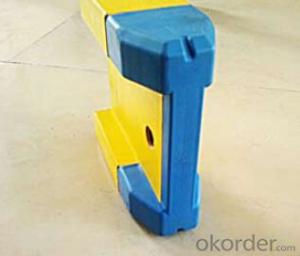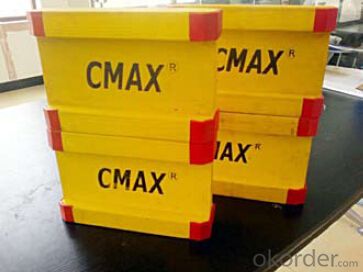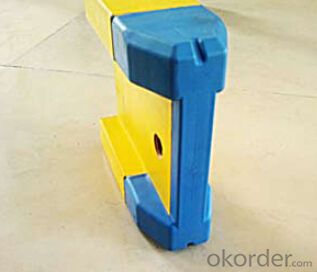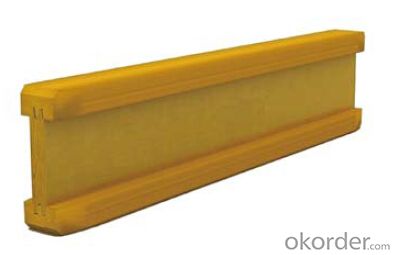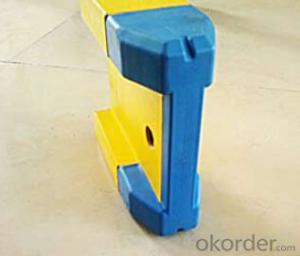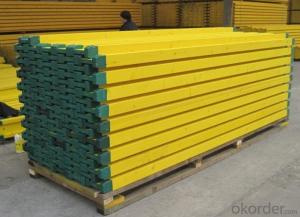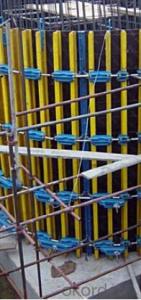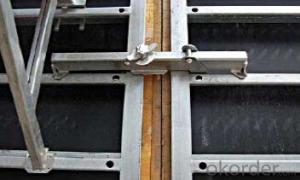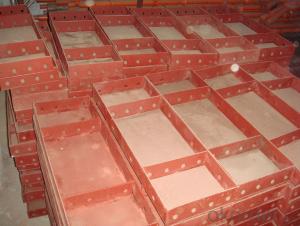Timber Beam Formwork for building construction
- Loading Port:
- Tianjin
- Payment Terms:
- TT OR LC
- Min Order Qty:
- 50 m²
- Supply Capability:
- 1000 m²/month
OKorder Service Pledge
Quality Product, Order Online Tracking, Timely Delivery
OKorder Financial Service
Credit Rating, Credit Services, Credit Purchasing
You Might Also Like
Characteristics:
◆ Standardized production lines.
Supply capability: 3000m/day, Lmax = 6600mm.
◆ Finger jointing of the flange and web, the strength of timber beam is highly improved.
Max. shearing force failure load:40KN
◆ Well treated to prevent from water penetration or erosion, so the service life maximally
extended.
Normally, CNBM timber beam H20 can be used for 4 to 5 years, the exact using time would
depend on maintenance & storage.
◆ Robust caps at the end of the girders protect against damages.
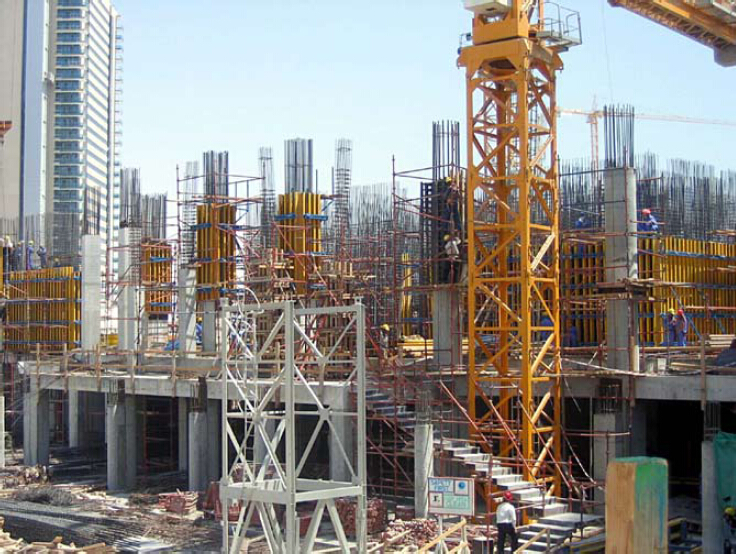
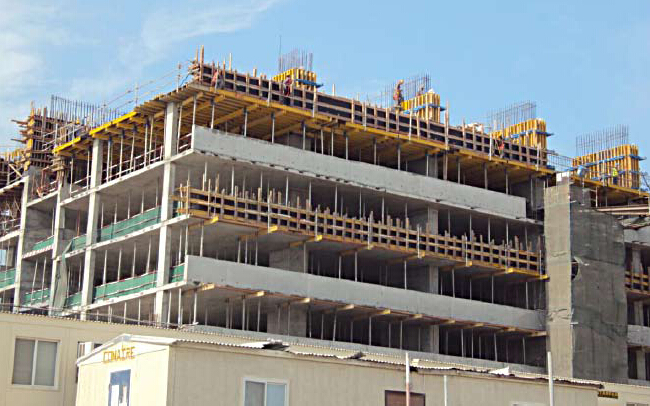
- Q: What are the typical fire resistance ratings of steel formwork systems?
- Steel formwork systems can have varying fire resistance ratings due to factors like the type and thickness of the steel used, as well as the overall design and construction of the system. However, steel formwork systems are generally known for their high fire resistance properties. Steel, being a non-combustible material, does not contribute to the spread or intensity of fire. It has a high melting point and does not ignite or release flammable gases when exposed to fire. Consequently, steel formwork systems can withstand high temperatures and offer excellent fire resistance. Often, steel formwork systems are designed to meet or exceed specific fire resistance ratings set by building codes and regulations. These ratings are typically expressed in terms of time, such as 1 hour, 2 hours, or more, representing the duration for which the formwork system can maintain its structural integrity and protect against fire. To further enhance the fire resistance of steel formwork systems, additional measures like fire-resistant coatings or insulation materials can be incorporated. These measures provide an extra layer of protection, increasing the overall fire resistance of the formwork system. It's important to note that fire resistance ratings may also depend on other factors, such as the presence of fire-resistant materials in the surrounding structure and the implementation of overall fire safety measures in the building. Therefore, consulting with structural engineers, architects, and fire safety experts is crucial to determine the specific fire resistance requirements and ratings for steel formwork systems in a given construction project.
- Q: Can steel formwork be used for both small and large-scale concrete placements?
- Steel formwork is versatile and can be employed for concrete placements of any size. With its robustness and endurance, steel formwork is ideal for a range of construction endeavors. Its assembly and disassembly are effortless, enabling cost-effective utilization in both minor and major concrete placements. Moreover, steel formwork imparts a uniform and sleek finish to the concrete surface, guaranteeing superior outcomes irrespective of the project's magnitude. Consequently, be it a petite residential construction or an expansive infrastructure venture, steel formwork proves to be a dependable option for concrete placements.
- Q: Can steel formwork be used for structures with high chemical resistance requirements?
- No, steel formwork is not suitable for structures with high chemical resistance requirements. Steel is prone to corrosion and is not resistant to many harsh chemicals. When exposed to chemicals, steel formwork can deteriorate and lose its structural integrity, compromising the stability and safety of the structure. In such cases, alternative materials like chemically resistant plastics or composites should be considered to ensure the longevity and durability of the structure in environments with high chemical exposure.
- Q: How does steel formwork contribute to the overall efficiency of construction processes?
- There are various ways in which steel formwork enhances the efficiency of construction processes. To begin with, it is highly durable and long-lasting, allowing for multiple reuses across different projects. This eliminates the frequent need for replacements, resulting in time and cost savings. Moreover, steel formwork is easily assembled and disassembled, facilitating quick setup and dismantling on construction sites. This saves valuable time during the construction phase. Additionally, steel formwork guarantees superior finishes on concrete surfaces. Its smooth and even surface ensures accurate pouring and setting of the concrete, leading to well-finished products. Consequently, the need for additional finishing work is eliminated, reducing labor costs and time. The stability and rigidity of steel formwork also prevent any deformations or movements during the pouring and setting of concrete, resulting in precise and consistent outcomes. Moreover, steel formwork offers design flexibility. Its ability to be easily customized and adjusted to various shapes and sizes allows for versatility in construction projects. This adaptability minimizes the requirement for multiple types of formwork, streamlining the construction process. Furthermore, steel formwork is resistant to adverse weather conditions, chemicals, and moisture, ensuring its durability even in harsh environments. This resistance decreases the likelihood of damage or deterioration, reducing the need for repairs and replacements. The longevity of steel formwork contributes to cost savings and enhances the overall efficiency of construction processes. In conclusion, steel formwork significantly enhances the overall efficiency of construction processes through its durability, reusability, easy assembly, high-quality finishes, design flexibility, and resistance to weather and chemicals. These advantages save time, reduce costs, and ensure the completion of construction projects efficiently and effectively.
- Q: Are there any special considerations when using steel formwork in cold weather conditions?
- Special considerations should be taken into account when using steel formwork in cold weather conditions. Firstly, the cold temperatures can cause steel to contract and become more brittle, increasing the risk of cracks or fractures in the formwork. Therefore, it is important to ensure that the steel formwork is properly designed and reinforced to withstand the potential stress caused by temperature changes. Secondly, the curing process of concrete can be affected by the cold weather. Steel formwork tends to conduct heat away from the concrete, slowing down the curing process. This can result in insufficient strength development and compromise the structural integrity. To address this, additional measures may be necessary, such as using insulating materials or applying external heat sources to maintain optimal curing conditions. Furthermore, cold weather can lead to the formation of ice on the surface of the steel formwork due to moisture freezing. This can increase the weight of the formwork and make its removal difficult. Additionally, it can cause damage if not properly managed. Therefore, preventive measures must be taken, such as using anti-freeze agents or ensuring adequate drainage to prevent ice buildup. Lastly, working in cold weather conditions can pose challenges for construction workers. It is crucial to implement appropriate safety measures, including providing sufficient insulation, heating facilities, and protective clothing to prevent workers from experiencing hypothermia or other cold-related illnesses. In conclusion, when working with steel formwork in cold weather conditions, it is important to consider the increased risk of brittleness, the impact on concrete curing, the potential for ice formation, and the well-being of workers. By taking these special considerations into account, the use of steel formwork can still be efficient and effective in cold weather conditions.
- Q: Is steel formwork suitable for projects with high wind loads?
- Yes, steel formwork is suitable for projects with high wind loads. Steel formwork is known for its strength, durability, and stability, making it an ideal choice for construction projects that are subject to high wind loads. Steel formwork provides excellent resistance against wind forces and can withstand strong winds without deformation or damage. Additionally, steel formwork offers a high level of dimensional accuracy, ensuring that the structure can withstand the forces exerted by the wind without compromising its stability. Therefore, steel formwork is a reliable and suitable option for projects with high wind loads.
- Q: Does steel formwork require any special tools for installation and removal?
- Typically, special tools are needed for both installation and removal of steel formwork. This is because steel formwork is heavy and rigid, which often means cranes, forklifts, or other lifting equipment are necessary to position the formwork panels. Additionally, tools like spanners, hammers, and wedges are commonly used to secure the formwork panels tightly and ensure stability during concrete pouring. When it comes to removal, power tools like grinders or cutting torches are usually required to disassemble and separate the formwork from the hardened concrete. These tools are needed to cut through any welds or bolts that hold the formwork in place. It is important to be cautious and follow safety protocols while using these tools. In summary, the heavy and sturdy nature of steel formwork necessitates the use of special tools and equipment for both installation and removal. This ensures that the formwork process is carried out efficiently and safely.
- Q: I would like to ask you 60 models of building steel formwork, steel mold fixed method and fixed plate type fixed hole number
- P6015:600 * 1500mm, P6012:600 * 1200mm, P6009:600 * 900mm, construction templates generally use U card or bolt fixation
- Q: Can steel formwork be used for curved or irregularly shaped structures?
- Yes, steel formwork can be used for curved or irregularly shaped structures. Steel formwork is highly flexible and can be easily customized to match the desired shape or form of the structure. Its strength and durability make it suitable for various construction projects, including those that involve unique or unconventional designs.
- Q: Does steel formwork require any special expertise or training for installation?
- Yes, steel formwork does require special expertise and training for installation. Steel formwork is a complex system of interlocking panels and components that are used to create temporary molds for pouring concrete structures. It requires a thorough understanding of the formwork design, installation techniques, and safety procedures. Professionals who work with steel formwork need to be knowledgeable about the specific requirements of each project, including the load-bearing capacity, formwork connections, and the proper placement of reinforcement. They also need to have the skills to accurately measure and cut the steel panels, assemble them correctly, and ensure that the formwork is properly aligned and braced. In addition, expertise in steel formwork installation includes understanding the different types of formwork systems available, such as adjustable steel formwork, modular steel formwork, or tunnel formwork, and knowing how to select the most appropriate system for a particular project. This knowledge is crucial to ensure that the formwork can withstand the pressure exerted by the wet concrete and can produce a structurally sound and aesthetically pleasing final result. Furthermore, proper training in steel formwork installation is essential to ensure the safety of workers and the overall success of the construction project. This includes knowledge of safety regulations, understanding how to use personal protective equipment, and being aware of potential hazards and how to mitigate them. Overall, due to the complexity and specific requirements of steel formwork installation, it is important to have professionals with the necessary expertise and training to ensure a smooth and successful construction process.
Send your message to us
Timber Beam Formwork for building construction
- Loading Port:
- Tianjin
- Payment Terms:
- TT OR LC
- Min Order Qty:
- 50 m²
- Supply Capability:
- 1000 m²/month
OKorder Service Pledge
Quality Product, Order Online Tracking, Timely Delivery
OKorder Financial Service
Credit Rating, Credit Services, Credit Purchasing
Similar products
Hot products
Hot Searches

